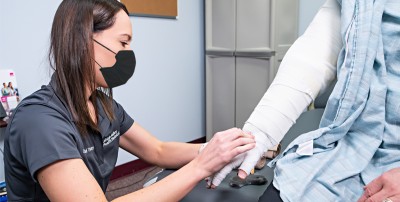
Surviving breast cancer is a victory. Contending with lymphedema, a side effect some women experience after breast cancer treatment, can feel like a never-ending struggle. However, a specialized lymphedema rehabilitation program at Lehigh Valley Health Network can help treat and relieve breast cancer-related lymphedema (BCRL).
